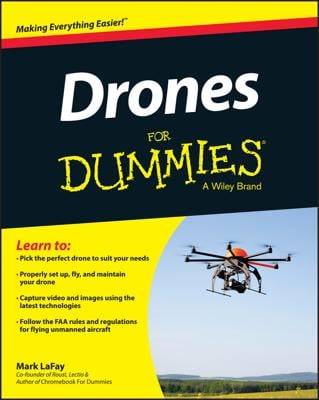Hoverboards, also known as self-balancing scooters, provide a fun way to get from place to place. It doesn’t take a tightrope walker’s sense of balance to make it work, but you will need a little practice.
![Riding a hoverboard just takes a little practice. [Credit: Image courtesy of cnet.com]](https://www.dummies.com/wp-content/uploads/505835.image0.jpg)
Safety tips for your hoverboard
You don’t want to jump on your hoverboard unprepared. Before you get moving, make sure you have some necessary safety gear. The following items are recommended.
-
Helmet
-
Wrist guards
-
Knee pads
-
Elbow pads
-
Tailbone protector
Properly provisioning yourself can help you avoid injury. Keep in mind that most of these devices are capable of traveling 8 to 10 miles per hour. While these are not terribly impressive speeds for a car, they can be tremendously dangerous on a hoverboard. It is important that you wear gear to keep all your body parts protected. Once you are all geared up, get on your hoverboard and get ready for the next step!
Riding a hoverboard
Now you’re ready to ride. Put down your hoverboard and take heed of the following steps.
-
Place your hoverboard on an even surface directly in front of you.
-
Step onto the hoverboard with one foot (whichever is most comfortable for you).
Make sure that the board is flat. It can be tricky to mount because the board begins moving as soon as it detects pressure.
-
Step up onto the board with the other foot.
Try and position your feet as far apart as possible. This stance will give you the most control.
Stand up straight and look forward. You will likely feel a little awkward at first and may even tense up. Just try to relax and concentrate on standing as normally as possible.
Congratulations! You have successfully mounted your hoverboard.
The next step is to get you moving. This requires leaning or gentle shifts of weight by pivoting your ankle up and down.
Be aware as you start out on your hoverboard. While leaning is necessary to move, you only want to make small shifts in your weight. If you lean too far, you can and will fall off your board.
Here are a few tips for moving:
-
Moving forward and backward: Slightly lean forward. Do not bend at the waist. The movement will be mostly in your ankles.
-
Turning: To turn your hoverboard, you will push your toes forward.
-
To turn left, push down your right toes.
-
To turn right, push down your left toes.
The farther down you push your toes, the more sharply you will turn. For sharper turns, you may even want to push down the toes on one foot, while simultaneously pushing down the heel of the opposite foot. With enough practice, you can eventually use this technique to spin in a circle.
-
When you have finished riding, dismount by performing the steps of mounting in reverse.
-
Shift your weight to your dominant foot.
-
Step down with your other foot.
Avoid jumping off of your hoverboard.
Many riders find that the most difficult part of learning to ride a hoverboard is the process of mounting and dismounting. Keep practicing. Encourage yourself to calmly step up and down as though you were climbing up or down a set of stairs.
Buying the right hoverboard
Recently, hoverboards have claimed a prominent place in the news. You may have heard about exploding boards. So what exactly is the issue?
Hoverboards are powered by large lithium-ion batteries. In certain cases, these batteries seem to be overheating and combusting. Many reports have led consumers to believe that cheaper, generic brands are primarily the ones that are exploding. Others suggest that faulty charging cables could also be to blame. The Consumer Product Safety Commission is hard at work trying to determine what is causing the explosions and which brands you should avoid as a result. Unfortunately, these investigations are still ongoing.
In the meantime, consumers are urged to avoid charging hoverboards overnight or unattended. It is also recommended that you seek out reputable sellers and buy directly from manufacturers, instead of third-party sellers. This reduces the chance of buying cheap off-brand boards that may be more prone to explosions. However, that being said, price does not seem to be a factor in determining quality.
Keep in mind that many major sellers such as Amazon and Overstock.com have pulled hoverboards because of the dangers associated with them. If you choose to purchase a hoverboard, do your research. You may also want to keep tabs on Underwriters Laboratories and their findings regarding specific brands.

